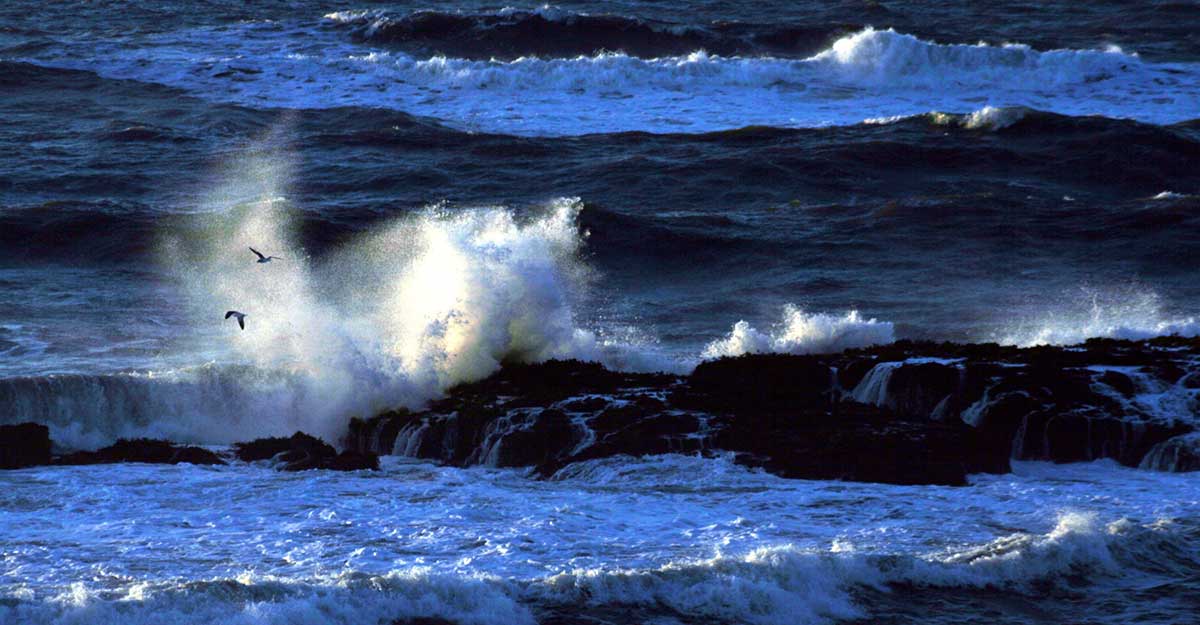
It was time for Miss Pratt’s sixth-grade history lesson, and she was at her wits end with the entire class. I suspect it had something to do with no one doing the homework assignments from the night before. Pop quiz she proclaimed, “Who discovered the Pacific Ocean?”
I mentally clapped my hands in glee because I knew the answer cold! It was in last night’s homework assignment. But — she didn’t start with me. “Sandy,” she said. Sandy sat three rows away from me.
Sandy was one of the smartest kids in the class. That’s most likely why Miss Pratt called on her. But when Sandy stood up to answer, I couldn’t believe what I heard. “Magellan,” Sandy said.
Miss Pratt told her to sit down and called on Doug who sat right behind her. I knew Doug didn’t have a clue what the answer was because he never knew the answer to any question. But, how could he be wrong with Sandy just answering? So he stood up and said, “Magellan.”
Carol, the next student, just heard two people in the class say “Magellan.” No point bucking a trend. She responded, “Magellan.”
And so it went from student to student — one at a time — stand up — “Who discovered the Pacific Ocean?” — “Magellan” — “Magellan” — “Magellan.”
As my turn approached, I started to doubt what I knew to be true. To this day, almost sixty years later, I remember the pressure that was building up in me. Panic started to set in. What if it was Magellan? Maybe I read it wrong in the book?
Finally, it was my turn. Trembling, I stood and in the smallest voice I could muster squeaked, “Balboa!” Miss Pratt, of course, didn’t hear me and made me sit down like the others. She kept on going down the rows. Every single student, except me, responded the same, “Magellan.”
After the last student had sat down, Miss Pratt, in disgust shouted out, “It was Balboa!” I think she might have added, “You imbeciles.” Grade school was different before the days of political correctness.
On the one hand, I was proud that I knew the answer and stated it. I was also disappointed that I didn’t have the courage of my convictions to be more emphatic!
Solomon Asch
In 1951, Solomon Asch, a psychologist, conducted a famous experiment on conformity. In effect, it was like what happened to me. (You can read more about Asch’s experiment at this link.)
Why do we conform?
Researchers interviewed the participants after the experiment was over. They discovered that subjects KNEW the answer was incorrect but went along with the rest of the group. They said they didn’t want to appear “stupid” or run the risk of ridicule. There were two reasons they gave for answering the way they did. First, they wanted to fit in with the group. Second, they thought the group might have been better informed than they.
Why does the possibility of ridicule make us give up what we know is true? Perhaps it is part of our nature learned early in life? Children laugh at their peers when they make mistakes. Stories cram history books of geniuses ridiculed as children.
We conform because it is safe. We’ve seen what happens to people who take a risk and fail. Usually, though, we don’t follow up with those same individuals when they succeed. Thomas Edison once said he failed hundreds of times, but each failure led to new learnings.
Conformity destroys creativity!
When we accept conformity, we gave up our individuality. We abandon our opportunity to be creative. Sir Kenneth Robinson talked about how our educational system demands conformity. Conformity leads to mediocrity and mediocrity leads to being just “average”.
Bill Alexander believed we all had a powerful force inside us which he called creative power. He spent his life encouraging his students to release their creative power. He knew that creative power built confidence and the ability to find truth in all areas of our lives.
At Alexander Art, we celebrate creative power and the uniqueness of individuals. Our goal is the same as Bill’s. We want to forge great artists; we want to help shape great human beings!


I totally agree with Bill. I was always encouraged to be creative–by my parents and grandparents, who were themselves artists and musicians. I never did “fit in” to school, and eventually stopped trying. This forced me to be creative and become comfortable with being “different.”
I only wish I had discovered Bill’s television shows when he was on the air. Only recently I watched one of his paintings called “The Summit” demonstrated on YouTube, and was awed. He was amazing.
Thank you for continuing to put out this website, and encourage other artists to learn. Not everyone can draw, but anyone can learn to paint, and if one learns this technique, your own creativity can apply it to some wonderful projects. Painting is a true joy.